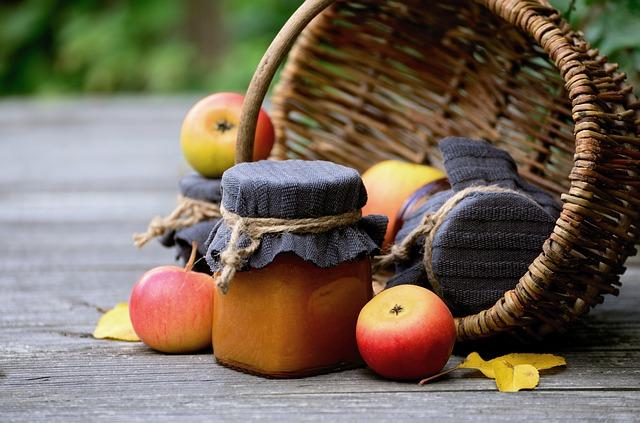
The Maryland Supplemental Nutrition Assistance Program (SNAP-Ed) is a nutrition education program that targets individuals and families eligible for SNAP (EBT). SNAP-Ed educators in Prince George's County provide resources to help people lead healthy lives through increased food access and improved overall health through nutrition and physical activity. SNAP-Ed partners with community organizations to change the policies, systems, and environments of those sites and offer education programs to support positive changes in those communities.
SNAP-Ed programming reaches participants in a variety of ways including:
- Classroom-based, in-person nutrition education for youth, which features tastings and food preparation opportunities.
- Onsite gardens and gardening for nutrition programs, which encourage the use of locally-produced foods for tastings, snacks, and meals.
- Text2BHealthy, a text-messaging program for parents of elementary school children, which features weekly texts with targeted and actionable information on nutrition and physical activity.
- Training sessions and technical assistance for farmers that facilitate more effective marketing to low-income shoppers at farmers' markets and other direct-marketing venues.
- Training for staff and volunteers at standalone and school-based food assistance sites to provide healthy food options, package healthy choices to make nutritious meals, assist clients in selecting healthy choices, produce healthy foods to distribute, and motivate pantry managers to become healthy food champions for their site.
Key SNAP-Ed Partnerships in Prince George's County include:
- Prince George's County Public Schools
- Prince George's County Judy Centers
- Prince George's County Memorial Library System
- Farmer's Markets
- Food Assistance Sites
For more SNAP-Ed resources, visit:
Contacts:
- Deborah Archer, Ed.D. - Principal Agent Associate, Project Leader and Nutrition Educator, 443-518-9563, darcher@umd.edu
- Madeleine Reinstein, Agent Associate, Nutrition Educator, mreinste@umd.edu
- Meghan Glass, Agent Associate, Nutrition Educator, mwglass@umd.edu
 English
English العربية
العربية Български
Български 简体中文
简体中文 繁體中文
繁體中文 Hrvatski
Hrvatski Čeština
Čeština Dansk
Dansk Nederlands
Nederlands Suomi
Suomi Français
Français Deutsch
Deutsch Ελληνικά
Ελληνικά हिन्दी
हिन्दी Italiano
Italiano 日本語
日本語 한국어
한국어 Norsk bokmål
Norsk bokmål Polski
Polski Português
Português Română
Română Русский
Русский Español
Español Svenska
Svenska Català
Català Filipino
Filipino עִבְרִית
עִבְרִית Bahasa Indonesia
Bahasa Indonesia Latviešu valoda
Latviešu valoda Lietuvių kalba
Lietuvių kalba Српски језик
Српски језик Slovenčina
Slovenčina Slovenščina
Slovenščina Українська
Українська Tiếng Việt
Tiếng Việt Shqip
Shqip Eesti
Eesti Galego
Galego Magyar
Magyar Maltese
Maltese ไทย
ไทย Türkçe
Türkçe فارسی
فارسی Afrikaans
Afrikaans Bahasa Melayu
Bahasa Melayu Kiswahili
Kiswahili Gaeilge
Gaeilge Cymraeg
Cymraeg Беларуская мова
Беларуская мова Íslenska
Íslenska Македонски јазик
Македонски јазик יידיש
יידיש Հայերեն
Հայերեն Azərbaycan dili
Azərbaycan dili Euskara
Euskara ქართული
ქართული Kreyol ayisyen
Kreyol ayisyen اردو
اردو বাংলা
বাংলা Bosanski
Bosanski Cebuano
Cebuano Esperanto
Esperanto ગુજરાતી
ગુજરાતી Harshen Hausa
Harshen Hausa Hmong
Hmong Igbo
Igbo Basa Jawa
Basa Jawa ಕನ್ನಡ
ಕನ್ನಡ ភាសាខ្មែរ
ភាសាខ្មែរ ພາສາລາວ
ພາສາລາວ Latin
Latin Te Reo Māori
Te Reo Māori मराठी
मराठी Монгол
Монгол नेपाली
नेपाली ਪੰਜਾਬੀ
ਪੰਜਾਬੀ Afsoomaali
Afsoomaali தமிழ்
தமிழ் తెలుగు
తెలుగు Yorùbá
Yorùbá Zulu
Zulu ဗမာစာ
ဗမာစာ Chichewa
Chichewa Қазақ тілі
Қазақ тілі Malagasy
Malagasy മലയാളം
മലയാളം සිංහල
සිංහල Sesotho
Sesotho Basa Sunda
Basa Sunda Тоҷикӣ
Тоҷикӣ O‘zbekcha
O‘zbekcha አማርኛ
አማርኛ Corsu
Corsu Ōlelo Hawaiʻi
Ōlelo Hawaiʻi كوردی
كوردی Кыргызча
Кыргызча Lëtzebuergesch
Lëtzebuergesch پښتو
پښتو Samoan
Samoan Gàidhlig
Gàidhlig Shona
Shona سنڌي
سنڌي Frysk
Frysk isiXhosa
isiXhosa
